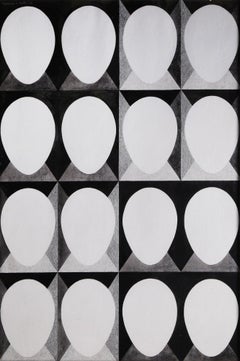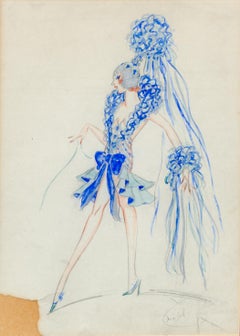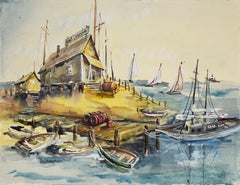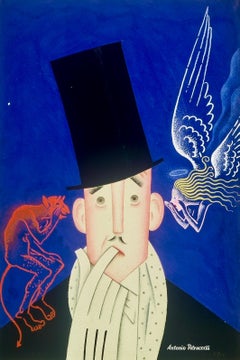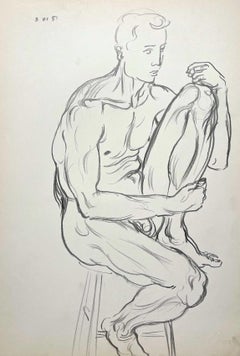American Modern Drawings and Watercolor Paintings
1960s American Modern Drawings and Watercolor Paintings
Crayon, Ink
1920s American Modern Drawings and Watercolor Paintings
Paper, Watercolor, Pencil
1960s American Modern Drawings and Watercolor Paintings
Paper, Watercolor
Late 20th Century American Modern Drawings and Watercolor Paintings
Pastel
1930s American Modern Drawings and Watercolor Paintings
Gouache, Board
1950s American Modern Drawings and Watercolor Paintings
Graphite, Paper
1950s American Modern Drawings and Watercolor Paintings
Ballpoint Pen
1930s American Modern Drawings and Watercolor Paintings
Watercolor, Gouache
1950s American Modern Drawings and Watercolor Paintings
Paper, Charcoal, Pastel
1920s American Modern Drawings and Watercolor Paintings
Gouache, Board
1950s American Modern Drawings and Watercolor Paintings
Paper, Charcoal, Pastel
1940s American Modern Drawings and Watercolor Paintings
Watercolor
1910s American Modern Drawings and Watercolor Paintings
Graphite
1970s American Modern Drawings and Watercolor Paintings
Paper, Watercolor
1940s American Modern Drawings and Watercolor Paintings
Charcoal, Gouache, Board, Pencil
1940s American Modern Drawings and Watercolor Paintings
Paper, Watercolor
1980s American Modern Drawings and Watercolor Paintings
Watercolor, Laid Paper, Photographic Paper
1870s American Modern Drawings and Watercolor Paintings
Watercolor, Archival Paper, Graphite
1950s American Modern Drawings and Watercolor Paintings
Graphite
1930s American Modern Drawings and Watercolor Paintings
Watercolor, Paper
1950s American Modern Drawings and Watercolor Paintings
Ink, Gouache, Graphite, Paper
1940s American Modern Drawings and Watercolor Paintings
Chalk
1930s American Modern Drawings and Watercolor Paintings
Watercolor
1920s American Modern Drawings and Watercolor Paintings
Paper, Ink
20th Century American Modern Drawings and Watercolor Paintings
Paper, Pastel, Watercolor, Board
1970s American Modern Drawings and Watercolor Paintings
Ink, Watercolor, Illustration Board
1950s American Modern Drawings and Watercolor Paintings
Paper, Ink
Late 20th Century American Modern Drawings and Watercolor Paintings
Pastel
1950s American Modern Drawings and Watercolor Paintings
Ink, Pen
1960s American Modern Drawings and Watercolor Paintings
Paper, Charcoal
2010s American Modern Drawings and Watercolor Paintings
Pastel, Mixed Media, Archival Paper
1930s American Modern Drawings and Watercolor Paintings
Paper, Pastel
1950s American Modern Drawings and Watercolor Paintings
Paper, Pastel
1930s American Modern Drawings and Watercolor Paintings
Watercolor
20th Century American Modern Drawings and Watercolor Paintings
Pencil, Watercolor
1930s American Modern Drawings and Watercolor Paintings
Pastel, Paper
1970s American Modern Drawings and Watercolor Paintings
Pencil
1930s American Modern Drawings and Watercolor Paintings
Watercolor
1950s American Modern Drawings and Watercolor Paintings
Pastel, Board
Mid-20th Century American Modern Drawings and Watercolor Paintings
Paper, Oil Pastel, Gouache
1930s American Modern Drawings and Watercolor Paintings
Graphite
Early 20th Century American Modern Drawings and Watercolor Paintings
Paper, Carbon Pencil
1950s American Modern Drawings and Watercolor Paintings
Watercolor, Paper
1980s American Modern Drawings and Watercolor Paintings
Paper, Watercolor, Pencil
Mid-20th Century American Modern Drawings and Watercolor Paintings
Paper, Oil Pastel, Gouache
1930s American Modern Drawings and Watercolor Paintings
Paper, Watercolor
1940s American Modern Drawings and Watercolor Paintings
Gouache, Board
1980s American Modern Drawings and Watercolor Paintings
Paper, Watercolor, Gouache
1970s American Modern Drawings and Watercolor Paintings
Mixed Media
Early 20th Century American Modern Drawings and Watercolor Paintings
Paper, Color Pencil
1930s American Modern Drawings and Watercolor Paintings
Watercolor, Gouache
1930s American Modern Drawings and Watercolor Paintings
Paper, Charcoal
1990s American Modern Drawings and Watercolor Paintings
Paper, Crayon
Early 20th Century American Modern Drawings and Watercolor Paintings
Paper, Pencil, Color Pencil
1950s American Modern Drawings and Watercolor Paintings
Ink, Paper, Pastel
1940s American Modern Drawings and Watercolor Paintings
Watercolor
1940s American Modern Drawings and Watercolor Paintings
Paper, Watercolor
1960s American Modern Drawings and Watercolor Paintings
Ink, Board
1940s American Modern Drawings and Watercolor Paintings
Paper, Watercolor
1960s American Modern Drawings and Watercolor Paintings
Archival Paper, Watercolor
